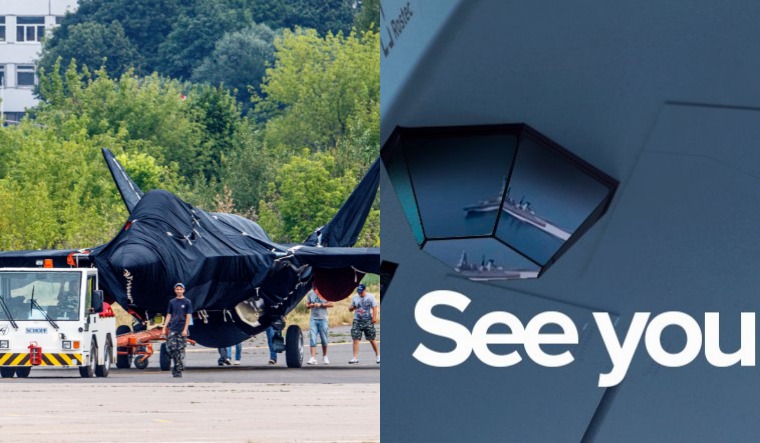Russia (and the former Soviet Union) has always been notorious for secrecy and opaqueness in how it showed new weapon systems. For instance, before a new Soviet/Russian fighter was officially unveiled to the world, photographs of it were always difficult to obtain for media and 'plane spotters', given security at bases and factories.
However, over the last week, Russia's arms industry has, arguably, adopted the technique of mobile phone makers and carmakers to provide glimpses of a new fighter. Last week, Russian arms industry conglomerate Rostec and its main aircraft manufacturing company, United Aircraft Corporation (UAC), announced they would officially launch a new fighter, dubbed the Checkmate, on July 20.
The Checkmate aircraft would be launched on the opening day of the International Aviation and Space Salon 2021 (MAKS), Russia's main air show. A trailer of the new fighter provoked curiosity as the silhouette of the aircraft appeared to resemble the MiG-35, a fighter that had failed to win any foreign orders since its launch in 2007. The trailer also showed an Indian pilot prominently, giving rise to speculation the new project was aimed as an export offering to the Indian Air Force and other customers.
Since then, plane spotters and Rostec itself have given glimpses of the new aircraft, which is kept at the Zhukovsky International Airport, the venue of MAKS. The images confirmed Checkmate was not a facelift of the MiG-35.
The aircraft could be seen hidden under a black tarpaulin cover, but enough details could be gauged.
Russian media reports said that the new jet has been built by the Sukhoi bureau in a programme to build a light tactical fighter. Unlike Russia's Su-57 two-engine stealth fighter, the new Checkmate fighter is smaller and has one engine. The aircraft has twin canted tailfins, a feature of US stealth aircraft such as the twin-engine F-22 and single-engine F-35. Moreover, images on social media showed the aircraft may have air inlets for the engine below the front fuselage.
The fact that the Checkmate is a single-engine fighter has given rise to the theory that it is a counter to the US-led F-35 project. The F-35 is the single-largest defence procurement project in US history, with the US Air Force, Navy and Marine Corps expected to buy over 1,700 aircraft. The F-35 is also being exported to most major US allies: Australia, UK, Israel, South Korea and Japan are among its buyers.
The connection to the F-35 came into renewed focus on Saturday when Rostec shared an image of what appeared to be an infra-red sensor. Rostec tweeted that "Black cases are very tempting, but the details are always more interesting" and used the hashtag Checkmate, heightening speculation that a similar system would be on board the new jet.
EOTS
The infra-red sensor appeared similar to the Electro-Optical Targeting System (EOTS) of the F-35.
Mounted under the fuselage of the F-35, EOTS has forward-looking infrared (FLIR) and infrared search-and-track (IRST) functions. IRST is meant to detect aircraft, helicopters and other targets in the air based on their heat signature, while FLIR is meant to detect targets on the surface, based on their heat signature. EOTS also has a laser-targeting system to guide laser-guided bombs.
also read
- Ukraine's spy chief names one Russian weapon that is giving them sleepless nights
- Russia explains why a plane from Vladimir Putin's presidential fleet spent two days on US soil
- Azerbaijan plane crash: Russia vows to punish those responsible for the tragic incident
- North Korea's Storm Corps: Who are Kim Jong Un's 'elite troops' fighting Ukraine for Russia?
Unlike radar, EOTS is a 'passive' sensor that does not alert an enemy to being detected and hence is an asset for stealth aircraft.
Russia has used IRST systems on its fighters for decades, but it is yet unclear how advanced the system shown by Rostec for the Checkmate fighter is.
Interestingly, the Rostec image of the infra-red sensor showed a Royal Navy Type 45 destroyer as a target. Earlier this month, Russia had claimed that it had dropped bombs near the HMS Defender, a Type 45 destroyer, that was passing off the coast of Crimea.




